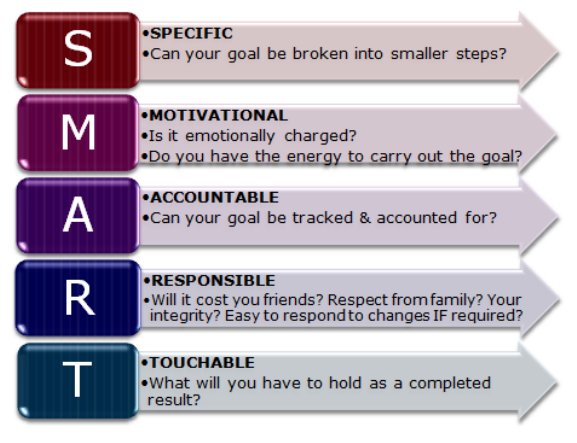Branding Challenge Day 17. Marketing Strategies for Product Owners
The Power of Marketing Strategies
A marketing strategy is part of any well thought out business plan. The goals and objectives you identify in your business plan correspond and support your marketing goals. Effectively a marketing strategy gives you the power to actually decide how you’re going to achieve your business goals. Your business goals are also part of your branding strategy.
Laying the Groundword For Your Marketing Strategies
The components of your strategy, which is what we’ll address, lay the groundwork for your marketing plan. Your plan, just to be clear, is a detailed description of the marketing channels and tactics you’ll use to achieve your marketing and business goals. It all fits together to create a well thought out business.
Live By Your Own Rules
Your marketing strategy gives you the ability to make the rules. Those You decide what you’re going to achieve and how you’re going to play the game – the game being “how do I create a successful business?”
As a rulebook, they also incorporate the branding for that business. This branding may be different from your personal branding. For instance, you may work in many niches.
Wearing Many Hats
I work a lot in the prostate niche. I obviously brand that separately. It has nothing to associate itself with my name. It can’t – how can a woman understand prostrate problems. However, the niche has been branded as a sperate and discrete business entity.
You’ll return to your rulebook, your marketing strategy, quite often to check in, to make sure you’re on track, and to see if any changes need to be made to your playbook, your marketing plan.
There are eight core components of a successful marketing strategy. Let’s start at the beginning.
1. Research
The only way that you can begin to craft a strategy is to know several key factors about your industry. Research is key and good research can mean the difference between success and struggle. So what do you research?
Target Audience
Who are you marketing to? Who will buy your product and why will they need or want it? What are their demographics? For example how old are they and where do they live? What are their psychographics? For example, what are their values? What are they interested in?
Competition
What other businesses are providing similar products and services? How are they positioned in the marketplace? What makes them successful? What are their weaknesses?
Marketplace
Explore seasonal sales, trends in the marketplace, current sales and benchmarks in the industry. This is less about your competition and more about positioning your product or services and exploring the past, present, and potential future for your industry.
2 Your Business Vision and Mission
This is a two-part section of your marketing strategy. Your vision is a statement about where you see your company in five or ten years. Clarity and focus are essential here. It’s easy to get a bit off track.
Think about sales, employees, your purpose in the marketplace and how you’re serving your audience. Your vision can be a paragraph or a page, there are no rules here. It’s simply a statement about where you want to take your business.
They should be memorable, inspirational, clear, and concise. They’re often just a few sentences long, written in the present tense, and ideally they’ll paint a vivid picture of what your company looks like in the future.
vision statements.
Creative Commons: Our vision is nothing less than realizing the full potential of the Internet — universal access to research and education, full participation in culture — to drive a new era of development, growth, and productivity.
Microsoft – A computer on every desk and in every home; all running Microsoft software.
Your Mission Statement
Your mission statement is a bit different. It takes your company’s values into consideration. When you’re trying to define your vision, think about who you’re selling to, what you’re selling and why people buy from you. Here’s Mattel’s mission statement to give you an example.
“Mattel makes a difference in the global community by effectively serving children in need. Partnering with charitable organizations dedicated to directly serving children, Mattel creates joy through the Mattel Children’s Foundation, product donations, grant making and the work of employee volunteers. We also enrich the lives of Mattel employees by identifying diverse volunteer opportunities and supporting their personal contributions through the matching gifts program.” (Source: MissionStatements.com)
3 Products or Services
Describe the products and/or services that your company offers. How does your product relate to your audience? How does it solve their problems? What products or services do they currently use and how/why will they choose you?
Earlier in your business plan, you may have outlined your business model. If that plays a significant role in your products or services, for example, you offer a membership site/service, then that information will be readdressed here in the marketing strategy section of your business plan. Keep in mind that it’s a description of your products or services here that are most important, not rehashing your business model.
4 Price
This may be the most difficult aspect of your marketing strategy. It’s where you determine the pricing structure for your products or services. Be sure to include the reasoning behind the pricing structure for each product or service.
You’ll likely come back to your marketing strategy on a regular basis and it can be difficult to remember why you made certain decisions. Documenting your reason for your pricing decisions will help you achieve clarity.
This is also where the concept of a sales funnel may come into play. If you have a freebie or entry level product, you may want to map the upselling and cross-selling process. What order will people most likely buy your products or services?
For example, will they buy the book first and then sign up for the coaching consultation? Will they attend your paid weekend event, then buy the book, and then sign up for coaching? Understanding the likely buying process will help you price the products accordingly.
Keep in mind the pricing structure of your competition here too. If you’re significantly higher priced than they are, what justifies the difference? Why will people pay more for your products or services?
These are the first four components of a marketing strategy – tomorrow in Part two we will cover the next four.



Howdy! Quick question that’s completely off topic. Do you know
how to make your site mobile friendly? My blog looks weird when viewing from my iphone 4.
I’m trying to find a theme or plugin that might be able to
correct this problem. If you have any suggestions, please share.
Many thanks!
Hi Wil just Google a mobile responsive wp theme, it’s really important you have one. Google is now penalising web sites that don’t comply.
Thanks a bunch for sharing this
This is very interesting, You know your subject
These are genuinely good ideas here I can use in my business